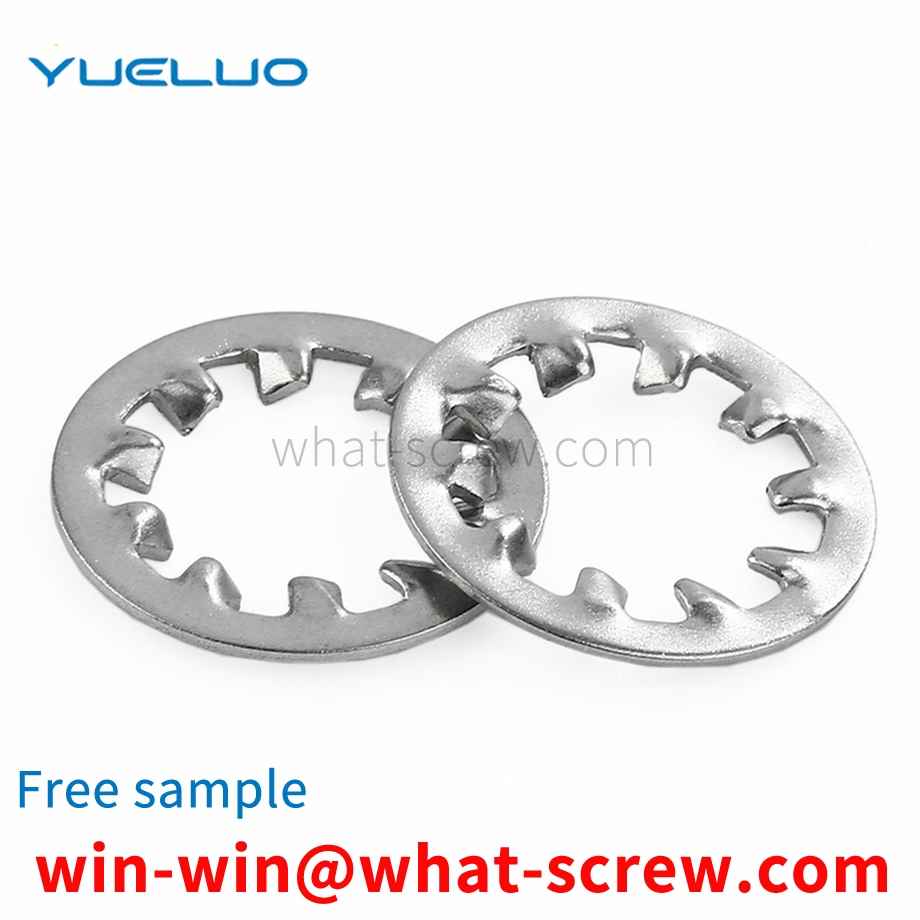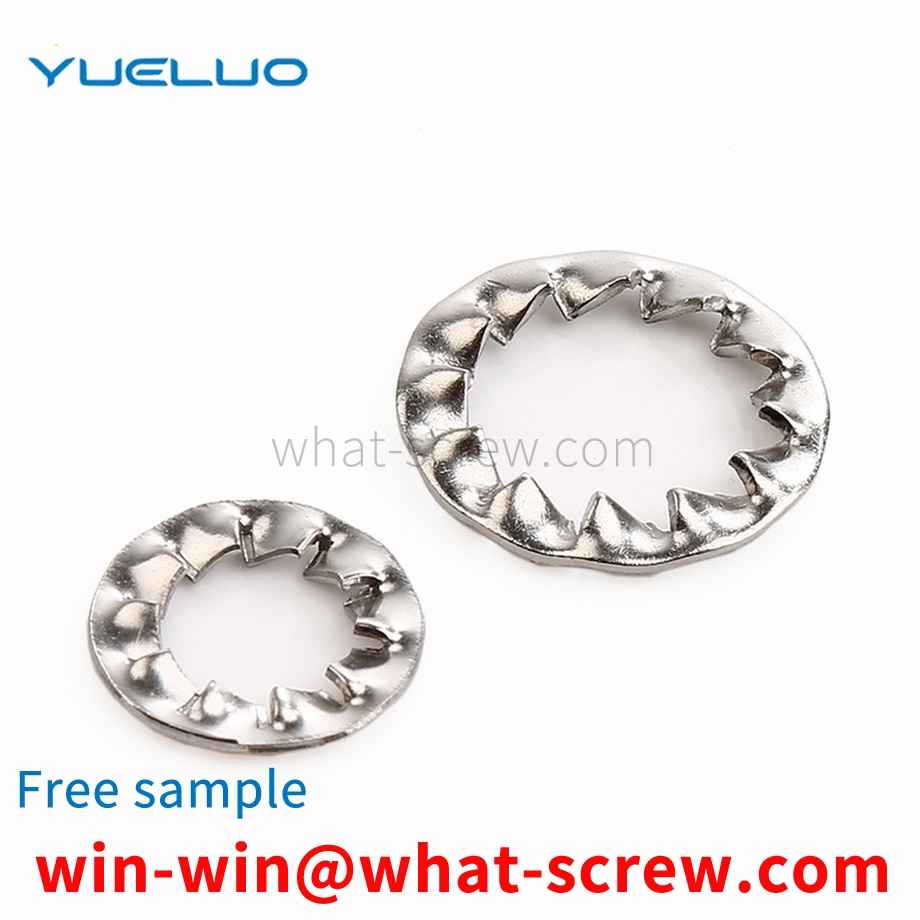Washers (spring) washers, circlips are elastic pads or card GalwayGalwaylock washers a washer that prevents bolts from loosening. The working principle of GalwayGalwaylock washers is very simple. It consists of two washers. The outside is a radial relief surface, and the inside is a helical tooth surface. When assembling, the inner helical tooth surfaces are opposite each other, and the outer radial raised surface is engaged with the contact surfaces at both ends. When the connecting piece is vibrated and the bolt tends to loosen, only the inner helical tooth surfaces of the two washers are allowed to face each other. Staggered movement, resulting in lifting tension, so as to achieve 100% locking.
GalwayFasteners are also divided into different types according to different uses, and new types of fasteners are developed according to the needs of special environments to meet the needs of all walks of life. The gasket combination bolt is a common fastening bolt. The combination gasket protects the surface of the connected parts from scratches, disperses the pressure on the connected parts, and has a sealing and anti-loosening effect. It is widely used. With the continuous improvement of requirements, the new zinc-aluminum coating surface treatment has gradually become the mainstream surface treatment process because it meets the environmental protection requirements, the surface is beautiful, and the corrosion resistance strength is higher than that of the zinc-nickel surface treatment.
There are many types of rivets, including dome head, flat head, Galwayblind rivet and so on. When riveting parts, they will have uneven force and affect the quality of riveting. Some rivet caps are too thin to easily affect the quality of riveting. Some rivets have poor tightness of riveted parts when riveting. Therefore, both the structure of the rivet and the tightness of the riveting need to be considered, so as to enhance the quality of the rivet fastening.
The advantage of Galwaywood screws is that the consolidation ability is stronger than that of nails, and they can be removed and replaced, which is more convenient to use without damaging the wood surface. This is a kind of nail specially designed for wood, and after entering the wood, it will be embedded in it very firmly. If the wood is not damaged, it is impossible to pull it out, and even if it is pulled out forcibly, it will bring out the nearby wood. Another point to note is that the Galwaywood screws must be screwed in with a screwdriver. Never knock them in with a hammer, as it will damage the surrounding wood. A screwdriver is a tool for loading and unloading Galwaywood screws. The shape matches the groove shape of the Galwaywood screw head, and there are two types: one-word and cross-shaped. In addition, there is a Galwayspecial screwdriver installed on the bow drill, which is suitable for loading and unloading large Galwaywood screws. Convenient and labor-saving. [2]
The difference between high-strength bolt friction type and pressure-bearing type connection: High-strength bolt high-strength bolt connection is to clamp the plate of the connecting plate through a large tightening pre-pressure in the bolt rod, which is enough to generate a large friction force, thereby improving the connection. The integrity and stiffness of the bolt can be divided into two types: high-strength bolt friction type connection and high-strength bolt pressure type connection according to different design and force requirements when subjected to shear force. The essential difference between the two is that the limit state is different, although It is the same kind of bolt, but it is very different in terms of calculation method, requirements, and scope of application. In the shear design, the friction type connection of high-strength bolts is the limit state when the external shear force reaches the possible maximum friction force provided by the bolt tightening force between the contact surfaces of the plates, that is, the internal and external shear force of the connection is guaranteed not to exceed maximum friction. The plate will not undergo relative slip deformation (the original gap between the screw and the hole wall is always maintained), and the connected plate will be elastically stressed as a whole. In the design of shear resistance, the external shear force is allowed to exceed the maximum friction force in the high-strength bolt-bearing connection. At this time, relative slip deformation occurs between the connected plates until the bolt rod contacts the hole wall, and then the connection depends on the bolt rod. The shearing of the body and the bearing of the hole wall and the friction between the contact surfaces of the plates jointly transmit the force, and finally the shearing of the shaft or the bearing of the hole wall is regarded as the limit state of the connection shearing. In a word, friction type high-strength bolts and pressure-bearing high-strength bolts are actually the same type of bolts, but whether the design considers slippage. Friction type high-strength bolts can never slide, and the bolts do not bear shear force. Once slipped, the design is considered to reach a state of failure, which is technically mature; pressure-bearing high-strength bolts can slide, and the bolts also bear shear force, and the final damage is equivalent to ordinary Bolt failure (bolt shearing or steel plate crushing).
We have many years of experience in the production and sales of screws, nuts, flat washers, etc. The main products are: hexagonal screw caps, flat head full hexagonal blind hole GalwayGalwayrivet nuts, aluminum hexagonal spacer column top column double-ended internal teeth, Galwaystud bolts and other products, We can provide you with the right fastener solution for you.



















 Service Hotline
Service Hotline




